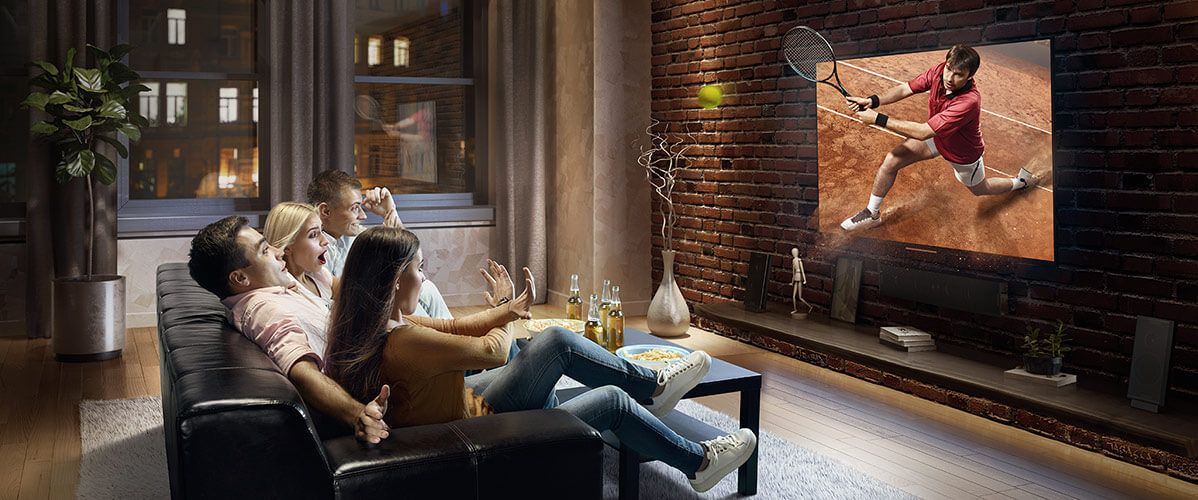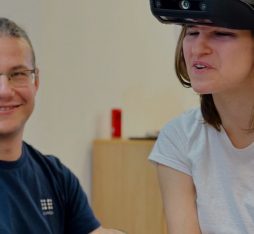Over the past twenty years, the entertainment landscape has been largely shaped by media digitalisation. The emergence and widespread adoption of the World Wide Web in particular have meant that new players like YouTube and Netflix have been able to emerge and impose novel ways of designing, distributing and consuming content on the market. Self-production is thus finding a growing role and an audience that complements professionally-generated content.
“Beyond Digital”, the new age of entertainment
So, after digital, what? The Flood? Far from it, as Ludovic Noblet, VP Hypermedia at b<>com, the technology research institute, explains: “We are now entering a new era, that of “beyond digital”, where the basic reference for creatives and content producers resides in the experience offered to users.” And effectively, the technology continues to advance at a frantic pace, although it is tending to disappear behind the content and the experience criterion. Or rather, it is tending to be the “vehicle for exaltation”, according to Vincent Marcatté, Chairman of b<>com and VP Open Innovation at Orange Labs: “Technology represents undeniable added value when it comes to enhancing an image or a video – a creative proposal, in short. But the content designer is still the cornerstone in this new era. As an operator contributing to the development of new uses and technologies, we are there to offer the creatives innovative tools that they can use to enrich the way they are going to deliver their creations to consumers, even if that means re-thinking narrative and storytelling mechanisms, especially via virtual and augmented reality.”
Why do we need to entertain ourselves in the 21st century?
In this connection, it is essential to involve content creators before developing an experience and to attune them to the technology. And because it could generate real breakthroughs in the way we entertain ourselves, it is also important to call on the views of acceptability experts. In the case of virtual reality or augmented reality, it involves the shift from entertainment to escapism, a new way of cutting loose from reality by immersing oneself in an alternative environment. This can raise issues in a number of areas, in respect of which content creators need to adopt a responsible stance so as not to cut users off from reality. One very mundane, material example was the Google Glass, whose users were often viewed with caution in public…
“The idea is to generate satisfaction among consumers, without which these new entertainment experiences are fated to be short-lived or isolated,” adds Ludovic Noblet. “And because it is a precondition for engagement and loyalty building. But where do this satisfaction and desire to consume come from? According to Uses and Gratifications theory, an audience switches to a specific media to satisfy a specific need, whether this involves information, personal identity (to underpin their values, their status, or to identify themselves to another), the quest for social interaction or entertainment – in other words, the ability to escape. A topic such as virtual reality, which is likely to situate itself at the intersection of these four uses, has a considerable potential for satisfaction and engagement in this respect.”
New experiences, new media: encouraging creation
Indulging himself in a little futurology, Ludovic Noblet reckons that the development of virtual/augmented/mixed reality technologies will go hand-in-hand with the emergence of new media players. “That’s because the technologies renew the possibilities of offering innovative content: virtual reality via on-demand platforms or the Cloud; new multi-user/multi-player experiences, etc.”
It is the likes of Google, Apple, Facebook, Amazon and Microsoft (aka GAFAM to the French) who were the first to see the way the wind was blowing, and who are massively investing in these areas. In 2014, Facebook acquired Oculus VR, the manufacturer of the Oculus Rift immersive headset, and the social network will shortly be launching Facebook Spaces, an app dedicated to the headset that will allow people to get together with their friends in a virtual, interactive environment.
The web giants are thus the powerhouses driving this revolution, and the traditional media are lining up behind them. In Europe, and in France especially, the content sector is still characterised by its vigour and diversity (that cultural exception again). “It’s essential to invest in content,” notes Vincent Marcatté. “Orange’s Content division, for example, is offering a bursary called Beaumarchais to young virtual reality creators and directors. At the same time, the Group is devoting a part of its research effort to designing different and differentiating entertainment experiences – today in the field of 360° Video, for example, and tomorrow in the field of “6DOF” (“Six Degrees Of Freedom”) video.”
The b<>com institute is also deeply involved in this subject area, aiming to “project virtual reality in a proactive approach,” adds Ludovic Noblet. “Today, it’s possible to immerse yourself in content. Tomorrow, you’ll be able to interact naturally with it!”










